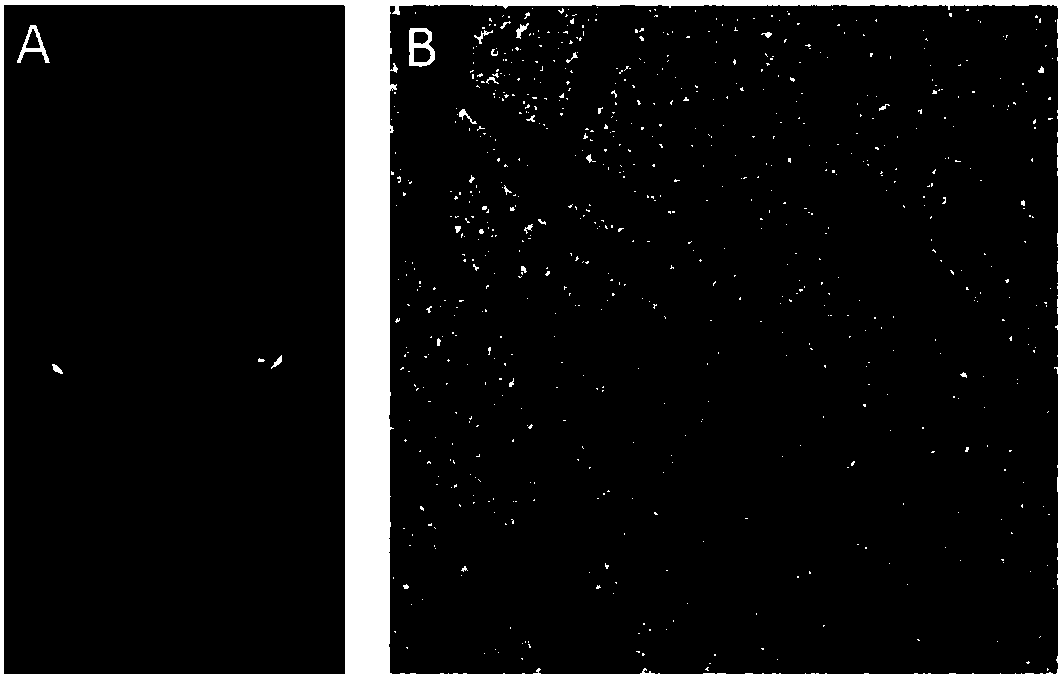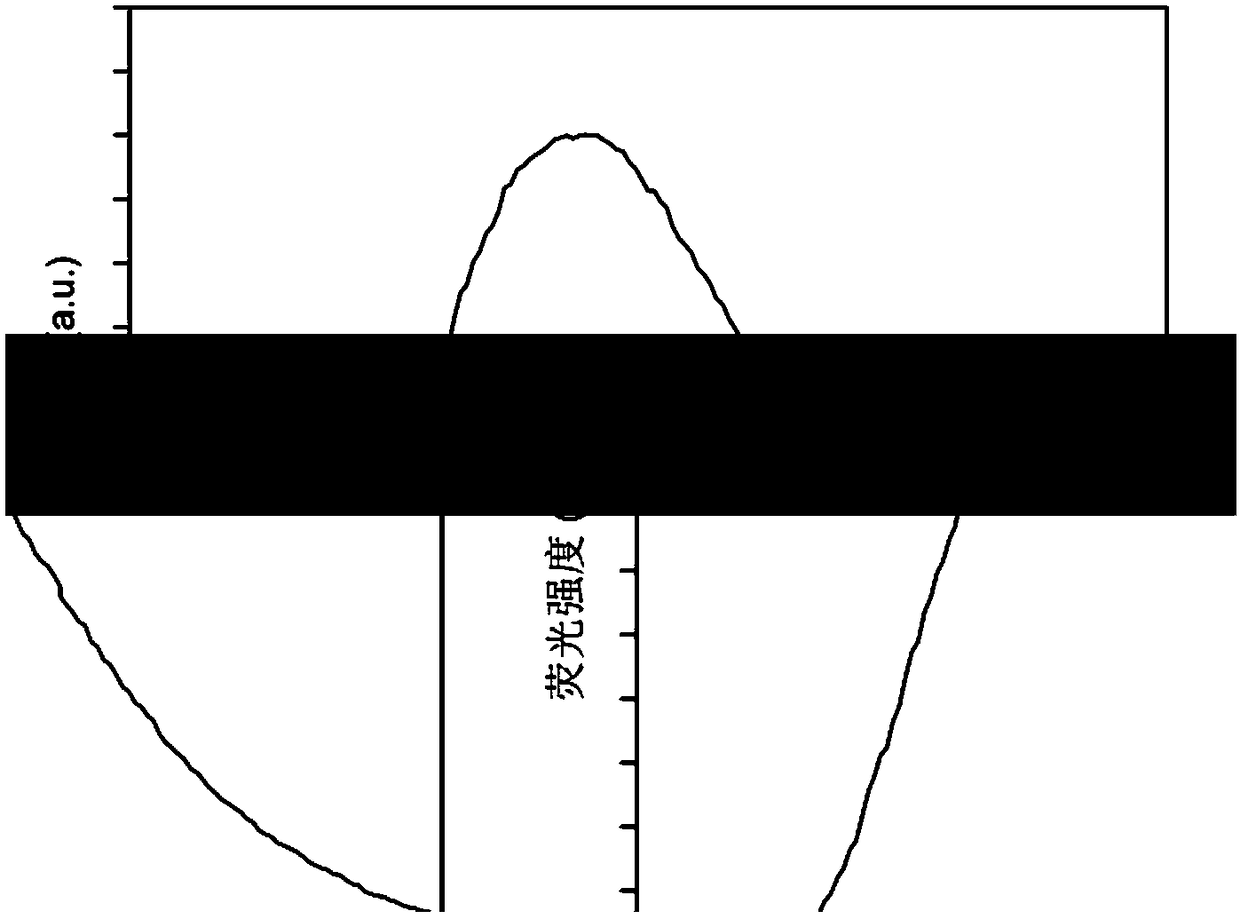Nano-crystal cellulose fluorescent probe for detecting metal ions and preparation method thereof
A nanocrystalline cellulose and fluorescent probe technology, applied in the intersection of nanomaterials and fluorescent sensing, to achieve the effects of improving selectivity and sensitivity, enhancing complexing ability, and easy regulation of fluorescent signals
- Summary
- Abstract
- Description
- Claims
- Application Information
AI Technical Summary
Problems solved by technology
Method used
Image
Examples
Embodiment 1
[0034] Take 10g of bleached coniferous pulp and soak it in water, use a deflagger to decompose and disperse it, then add TEMPO (0.16g), NaBr (1.6g) and NaClO (110mL), and use NaOH (2mol / L) to adjust the pH between 10 and 10.5 , stirred and reacted for 4h, then suction-filtered, soaked the slurry obtained by suction-filtration twice with HCl (1000mL, 0.1mol / L) solution, and washed until neutral. The obtained sample was decomposed in a decomposer for 5 minutes, the pH value was adjusted to 10-10.5 with NaOH (2 mol / L), and a clear and transparent solution was obtained by ultrasonication. The above solution was freeze-dried for 3 days to obtain nanofibrillar cellulose (NFC).
[0035] Add freeze-dried NFC (3.77g) and HCl (200ml, 3mol / L) into a 500mL four-neck flask, heat to reflux for 3h, cool to room temperature after the reaction, and wash with high-speed centrifugation (10000rpm, 10min) until neutral to obtain nanocrystals Cellulose (NCC), freeze-dried to obtain NCC solid.
[...
Embodiment 2
[0039] Take 10g of bleached coniferous pulp and soak it in water, use a deflagger to decompose and disperse it, then add TEMPO (0.16g), NaBr (1.6g) and NaClO (110mL), and use NaOH (2mol / L) to adjust the pH between 10 and 10.5 , stirred and reacted for 4h, then suction-filtered, soaked the slurry obtained by suction-filtration twice with HCl (1000mL, 0.1mol / L) solution, and washed until neutral. The obtained sample was decomposed in a decomposer for 5 minutes, the pH value was adjusted to 10-10.5 with NaOH (2 mol / L), and a clear and transparent solution was obtained by ultrasonication. The above solution was freeze-dried for 3 days to obtain nanofibrillar cellulose (NFC).
[0040] Add freeze-dried NFC (3.77g) and HCl (200ml, 3mol / L) into a 500ml four-neck flask, heat to reflux for 3h, cool to room temperature after the reaction, and wash with high-speed centrifugation (10000rpm, 10min) until neutral to obtain nanocrystals Cellulose (NCC), freeze-dried to obtain NCC solid.
[...
Embodiment 3
[0044] Bleached softwood pulp was pulverized in a Wiley pulverizer and passed through a 20-mesh sieve, and the obtained cellulose powder (50.0 g) was added to 500 mL of 64 wt% H 2 SO 4 , heated to 45°C under stirring for 45 minutes, then added 10 times deionized water to dilute to terminate the reaction. The mixture was centrifuged at 5000rpm for 10min, and the supernatant was removed. The resulting precipitate was redispersed in deionized water and dialyzed with a regenerated cellulose membrane with a molecular weight cut-off of 12000-14000 for 7 days until the pH value remained unchanged. The dialyzed mixed solution was sonicated in an ice-water bath for 30 minutes, centrifuged at 5000 rpm for 5 minutes, and the slightly turbid nanocrystalline cellulose (NCC) dispersion in the upper layer was collected. Repeat the above process until the supernatant liquid becomes clear after centrifugation, and the obtained nanocrystalline cellulose (NCC) is divided into water dispersion l...
PUM
| Property | Measurement | Unit |
|---|---|---|
| diameter | aaaaa | aaaaa |
| length | aaaaa | aaaaa |
Abstract
Description
Claims
Application Information
 Login to View More
Login to View More - R&D
- Intellectual Property
- Life Sciences
- Materials
- Tech Scout
- Unparalleled Data Quality
- Higher Quality Content
- 60% Fewer Hallucinations
Browse by: Latest US Patents, China's latest patents, Technical Efficacy Thesaurus, Application Domain, Technology Topic, Popular Technical Reports.
© 2025 PatSnap. All rights reserved.Legal|Privacy policy|Modern Slavery Act Transparency Statement|Sitemap|About US| Contact US: help@patsnap.com



